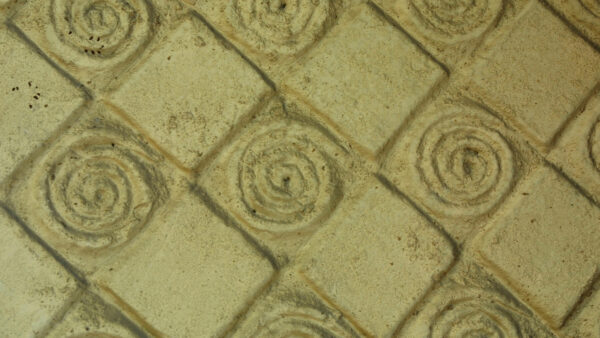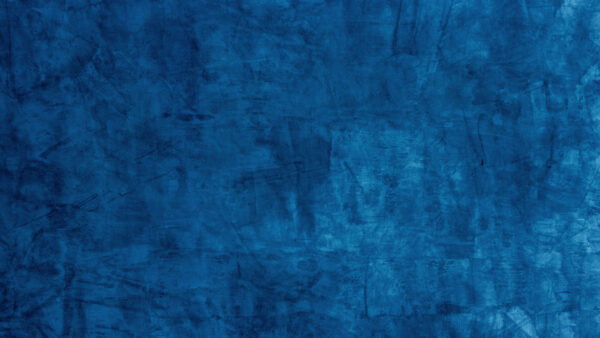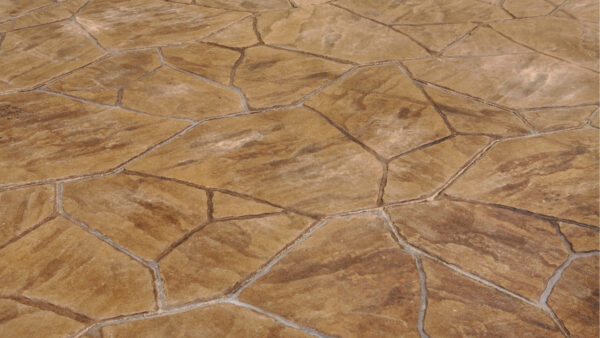If you are done with your monotonous outdoors and drab indoors, how about giving them a touch of color to ward off hackneyed ambiances. For such a radical change in aesthetics, stamped concrete is what your thoughts should stop by.
If high cost is what is stopping you from going ahead, we are sure after reading this article, you’ll be up for an investment leap.
Let us discuss in detail the applications of stamped concrete and how different and useful it might prove to be.
Table of Contents
What is Stamped Concrete?
Stamped concrete (also called “Decorative Concrete”) is an advanced concrete type that is textured, patterned, or embossed to resemble paving units such as bricks, slate, natural stone or cobblestone, tile, wood, etc. depending upon the pattern and color given to it. The stamping results in the final, finished product not looking like concrete.
Stamped concrete aims at substituting costly construction materials with a cheaper and aesthetic alternative. Bricks and stones have long contributed a ton to the manufacturing of pavers and they are still not out of the list.
However, apart from strength, these materials are not aesthetically customizable and you will have to resort to what is generically available.
In stamped concrete, the provision of color hardener is what imparts color and provides a hard, non-wearing layer to it. When textures are added on by stamping, the finished product is worth the investment.
Spotlights from History
Decorative concrete was first cast in around 1950s by a person named Brad Bowman, who worked on giving color and imprinting a texture on paved concrete. Since then, the development we see in stamped concrete is incessant.
Today, we have a myriad of textures and colors that we can deliberately impart to the concrete. Stamped concrete can either be cast in-situ or small units of stamped concrete tiles can be manufactured and transported to the site.
Required Construction Materials
In order to produce stamped concrete, you will need all the ingredients of a normal concrete mix and some additional components as will be discussed in the coming paragraphs.
- Cement is the integral binding material for essentially all concrete types. It not just provides confinement to the concrete but is also the key component in the strength-gaining process of concrete.
- Fine Aggregates (sand) are also common to all concrete types. Their main purpose is to fill up the smaller voids in the concrete and also to reduce the overall concrete cost.
- Coarse Aggregates may or may not be present in the concrete mix depending upon the type of concrete. However, in the majority of concrete mixes, coarse aggregates are present and make up most of the concrete volume. They provide impact resistance to concrete and are also the hardest ingredient added.
- Water is the least expensive and the most important material that actually synthesizes what we call concrete. It is added for kickstarting the hydration process and for imparting good workability to the concrete mix.
- Color Hardener is the component that is added only for stamped concrete. It is a powdered blend of cement, powdered silica aggregate, inorganic color pigments, and admixtures subject to need.
- Release Agent is used for stamped concrete and it acts as a moisture barrier between the concrete surface and stamping mold.
- Sealant is used in stamped concrete for full coverage of the surface against moisture ingress, weathering, or wearing. Mostly, UV-resistant acrylic sealers are used and they perform exceptionally well by bonding with the underlying concrete.

Flowchart showing steps of stamped concrete production
You can see that stamped concrete is nothing out of the blue. It is just obtained with some tampering with the conventional concrete mix. The surplus ingredients are herewith elaborated for a comprehensive understanding of them.
Color Hardener
Basic Use
Color hardener, also called anti-wear concrete powder, as you may know by now, is a blended mixture of carefully-selected ingredients that impart color and strength.
The purpose of sprinkling color hardener on the top of cast concrete while it is still plastic is to improve the concrete’s mechanical properties and produce a colored version of it, which can then be stamped or textured to will.
The following are some of the key functions performed by a color hardener.
- It imparts an aesthetic color to the finished concrete.
- It augments the density and durability of concrete floor surfaces.
- It improves the floor’s resistance to wearing or abrasion.
- It decreases the porosity of the floor surface and moisture penetration.
- It also reduces dusting and minimizes concrete maintenance and repair.
- It reduces the hydration temperature in mass concreting and therefore prevents the formation of shrinkage cracking in concrete at early stages.
A question may pop up in your mind about what ingredient is it in the hardener that improves its performance. The answer to this is that just as concrete does not perform well in tension and steel reinforcement is added to offset this problem, the presence of micro silica gel in the hardener increases the concrete’s resistance to tensile forces.
It should be kept in mind that stamped concrete is not the only way to produce colored concrete. In the market, we have admixtures that can be added while producing the concrete mix and will result in integrally colored concrete.
Available Colors
Color hardener is available in more than 40 colors in pails and can be ordered from online stores with your ease. These coloring materials are bound to conform to ASTM C979 for color stability.
Think of a color in your head and go search for it online, we are sure you’ll find a hardener matching the hue. The color names are generally given by the trademark company and are specified on their products.
A few amazing and blended colors include,
- Mauve
- Currant
- Steel blue
- Tropical teal
- Burnt orange and many more
The following images are some of the textures you can get from stamping concrete.

Concrete having pattern detail

Concrete having black texture

Concrete having a blue, non-homogeneous texture
Limitations
Although stamped concrete gives an aesthetic look to pavements, the addition of color hardener is not recommended in certain situations as elaborated below.
- For pavements subject to heavy traffic loading, color hardener must not be used.
- For the addition of color hardener, the concrete slump should not exceed 3 inches and it should have no more than 3% air entrainment.
- Color hardeners must be avoided in paving concrete that contains chloride-based admixtures or calcium chloride.
- Open paved areas made of concrete where frequent deicing is required in winter or are susceptible to chemical attacks must not have color hardened accommodated in concrete.
Color Release Agent
When color hardener penetrates the top layer of concrete, a color release agent is sprinkled on top of it to create a non-sticky interface between the concrete and stamping mold.
These powdered or liquid releases are composed of cement, water-repellant, and some pigment. They act as bond inhibitors when molds are pressed to transfer imprints on the concrete surface. They also give a finished and enhanced look to stamped concrete.
The release agent type depends on whether the stamped concrete is used indoors or outdoors and different agents are used in different cases.
Applications of Stamped Concrete
- Stamped concrete can be used for exterior as well as interior flooring and the colored imprint you want to have on the concrete depends on your choice and the surroundings.
- For exterior flooring or outdoor paving, stamped concrete can be used in driveways, patios, pedestrian walkways or sidewalks, decking around a pool, etc.
- When talking about the outdoors, we often see restaurant owners switching to outdoor dining. This is because if the outdoors link well with the natural ambiance, the customers feel connected with the atmosphere and enjoy the meal.
- The use of stamped concrete is very common for decorating patios and pool decks.
- For floors of commercial buildings including shopping centers, malls, plazas, etc., stamped concrete, especially the one resembling tiles, can be used to raise the bar of aesthetics to a higher level.

Stamped concrete used in sidewalks
Code Specifications for Decorative Concrete
The ACI and ASTM codes have specified some guidelines when producing stamped concrete. These guidelines will help you in the mix design process as well as in the stamping stage.
The following documents are the code or standards to be referred to in this case.
- ACI PRC 310-19: Guide to decorative concrete
- PA124 by Portland Cement Association (PCA): Finishing concrete with color and texture
How to Stamp Concrete?

Concrete with a leaf stamp
By now, it might seem that stamped concreting is a facile task that every Tom, Dick, or Harry may execute. However, that is not the case. If unskilled labor is hired for such construction work, you will end up in concrete that lacks homogeneity of color and texture and that is prone to disintegration any time soon.
Following are the essential steps to be performed in order to come up with a stamped concrete that stands out.
- Plan and decide the color and texture of concrete keeping in consideration the natural surroundings and adjunct structures.
- The concrete mix is prepared in the same way as the normal concrete mix.
- Once the conventional mix is ready, add the color hardener either in liquid or powdered form whatever is available using a mason brush. The color hardener is nothing but an overlaying of a blend of silica, cement, and desired color pigment.
- Once the surface is properly dusted, it is troweled on. If the area to be troweled is large, you can use a float for making the whole surface uniform.
- Allow the hardener to absorb water from the concrete. As a consequence, it will penetrate about three to four millimeters into the top layer of concrete.
- After finishing off with the color hardener and leveling the surface, a color release agent is sprinkled on the top. This color release agent has the property of repelling water and forms a non-sticky interface between the color hardener and the stamping mold.
- Use the brick form texture skins around the outside edge before using your texture mats.
- Following this, the concrete is stamped using embossed stamping molds available in various patterns and are generally made up of polyurethane. Stamping simply means to uniformly transfer the impression present on the mold to the base concrete.
- Stamping can be done by feet if the stamping area is small. However, for larger areas, the stamping tool is preferred.
- After pressing in the stamping mold, the concrete gets the desired pattern and the mold is removed.
- The concrete is then kept for five to six hours or even a day and then the release agent is washed off using pressure washers.
- The concrete is then sealed with a solvent-based acrylic top coat. The sealing makes the concrete completely hydrophobic and brings out a deep-tone color in the concrete. The sealing process may have to be repeated after a couple of years depending upon the usage of the stamped concrete.
- Do not forget to cure the concrete in order to gain optimum strength at later stages.
- A reseal is required after a couple of years to help the concrete retain its finished surface.

Pressure washing to remove release agent
Considerations On-Site and Off-Site
Just like conventional concrete requires some consideration on-site and off-site, stamped concrete is also one such concreting. The following points should be kept in mind for a better result.
- The concrete grade generally recommended for stamped concrete is M30 and it is poured in a 3-inch layer. Before pouring, markings are done to set the levels and slopes where required.
- Make sure the concrete slump is adequately regulated and as per the mix design. This is because any laxity in controlling the design parameters will strike-off the balance between water and cement. This will yield a concrete either very flowable or stiff.
- In the case of stamping a slab, you will need an ample quantity of stamps to go across your slab in a zigzag pattern.
- Make sure the concrete is kept for 48 to 72 hours prior to washing or sweeping off the release powder.
- If the stamping mold is directly placed over the color hardener, it will stick to the concrete top.
- For augmenting the aesthetics of the embossed patterns, tools such as a grinder with a diamond blade (be it a tuck point blade or a crack chasing blade), chisels, etc. can be used for detailing the stamped concrete by removing the squish ups that occur between stamps. In other words, the grout lines are made prominent so that the concrete literally resembles paving units like bricks, stone, etc.
Pros of Preferring Stamped Concrete over Bricks or other Paving Units
- When it comes to durability and longevity coupled with weather resistance, you will never hesitate to prefer concrete over bricks, stones, tiles, or wood. This is because concrete itself comprises all the materials that impart strength to them.
- The service life of paving units made out of concrete and stamped to give an aesthetic outlook is greater than other pavers.
- \Stamped concrete is more affordable that other pavers.
- It adds an aesthetic touch to the indoors and outdoors and compliments well with the natural surroundings.
- When sealed, the concrete is easier to maintain and less repair is required over time.
- The colors, patterns, and textures offer a great variety and based on the surroundings of where the concrete is to be cast, you can pick and choose your match.
- Once you improve the aesthetics of your house, its monetary worth will show a spike.
- A stamped concrete surface is relatively less slippery and therefore, it can be used in flooring of house interiors where if marble tiles are used, you make accidentally tip off and slip.
Cons of Using Stamped Concrete
- Stamped concrete, if not sealed properly, is prone to damage. Even if it is sealed properly, it is to be resealed after a couple of years to make sure it remains durable.
- Deicing salts and chloride-based admixtures make stamp concrete prone to splintering and disintegration when exposed to them for a long period.
- Stamped concrete is not very effective for pavements subject to heavy loading.
- Repairs in a part of stamped concrete pavement become difficult, unlike conventional concrete.
- When the overall construction cost of concrete is compared, including material cost, labor cost, etc., stamped concrete becomes expensive owing to the complexity of work.
Frequently Asked Questions (FAQs)
What is the difference between colored concrete and stamped concrete?
When we say colored concrete, we essentially refer to concrete that has a different color top-to-bottom than conventional grey concrete.
The surface of colored concrete is plain and non-textured. To produce such concrete, you will only need to add the coloring pigment into the wet concrete while preparing the mix. However, the pigment must have properties that conform to standard guidelines.
This type of concrete is also termed “integrally colored concrete” and the guideline for concrete are elucidated in ASTM C979 as “Standard Specifications for Pigments for Integrally Colored Concrete.”
On the other hand, when we talk about stamped concrete, we are focusing more on the top texture of concrete, which may or may not be colored. However, below the top layer where stamping is done, lies essentially the same grey conventional concrete.
Is architectural concrete the same as stamped concrete?
The answer to this question is “no”. Architectural concrete aims at performing a two-fold function. It is not just aesthetically pleasing but structurally efficient, too. It is almost always exposed to the public’s view and therefore, the material selection for it might be a tad challenging task.
Stamped concrete, on the other hand, is generally used for flooring and even in that case, its use is avoided if heavy loading is anticipated.








